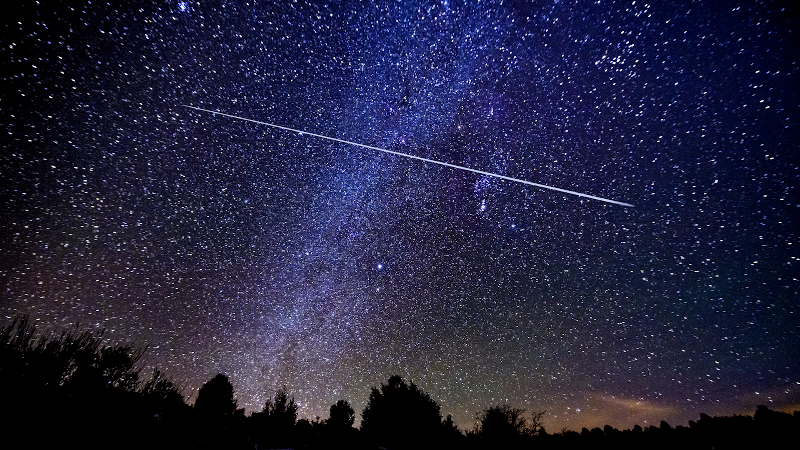Lyrids hit peak activity in April: How to see the first meteor shower of spring
The Lyrid meteor shower can produce bright whizzing fireballs when it peaks every April.

The Lyrids, one of the oldest known meteor showers is returning to the skies later this week.
In the days ahead, stargazers will have a chance to witness some Lyrid meteors before the shower hits its peak in activity early next week.
The Lyrid meteor shower, formed from leftover particles from comet Thatcher, becomes visible to us here on Earth like clockwork every April as our planet passes through the debris trail. While the meteors don't have distinctive tails, the shower can produce bright whizzing fireballs that may make it worth staying up late to catch a glimpse.
Here's everything to know about the Lyrid meteors, including when and how to see them in 2025:
When is the Lyrid meteor shower peaking?
The Lyrid meteor shower will next peak between Monday, April 21 and Tuesday, April 22, according to the American Meteor Society.
But stargazers may be able to watch some shooting meteors this week, as the shower will become active beginning Thursday. The activity is expected to cease by April 26, the American Meteor Society says. The timing means the Lyrids activity will overlap with another meteor shower known as the Eta Aquarids.
How to see the Lyrids
The Lyrids are best viewed in the Northern Hemisphere during the dark hours between midnight and dawn.
The meteors seem to emerge – or radiate – from the constellation Lyra, specifically a bright star named Vega, according to astronomers.
Seasoned stargazers should easily be able to find Vega in the night sky, but if you need help locating it, look above the horizon toward the northeast between about 9 to 10 p.m. EDT. Vega will then continue to climb upward until it is high enough in the sky that meteors radiating from that direction streak across, according to Earth Sky.
Astronomers caution that the radiant is not necessarily a good guide for where stargazers should look to view the streaking meteors. In fact, looking away from the radiant will make the meteors "appear longer and more spectacular," according to NASA.
The U.S. space agency also has these viewing tips:
- Find an area distant from city light pollution or street lights.
- Bring a sleeping bag, blanket, or lawn chair. Lie flat on your back with your feet facing east and look up, taking in as much of the sky as possible.
- After about 30 minutes in the dark, your eyes will adapt and you will begin to see meteors.
The website Time and Date also provides detailed information about where and when to see the phenomenon.
How many Lyrid meteors will we see per hour?
The first meteor shower of the spring, the fast and bright meteors of the Lyrids will appear to be flying across the night sky.
While NASA notes that the Lyrids can surprise watchers with as many as 100 meteors seen per hour, in general, 10-20 Lyrid meteors can be seen per hour during the peak.
Lyrids don’t tend to leave long, glowing dust trains behind them as they streak through the Earth's atmosphere, but they can produce the occasional bright flash called a fireball.
What causes the Lyrid meteors?
Meteor showers occur when Earth passes through dusty debris trails left by comets and other space objects as they orbit the sun. The debris – space rocks known as meteoroids – collides with Earth's atmosphere at high speed and disintegrates, creating fiery and colorful streaks in the sky, according to NASA.
Those resulting fireballs, better known as "shooting stars," are meteors. If meteoroids survive their trip to Earth without burning up in the atmosphere, they are called meteorites, NASA says.
The Lyrid meteor shower is composed of pieces of debris from the Comet C/1861 G1 Thatcher on its orbit around the sun, which is thought to take nearly 416 years. The comet is named for A. E. Thatcher, who discovered it in 1861.
The meteor shower itself, though, has been observed for 2,700 years ever since the first recorded sighting was made in 687 BC by the Chinese, according to NASA.
Eric Lagatta covers breaking and trending news for Paste BN. Reach him at elagatta@gannett.com